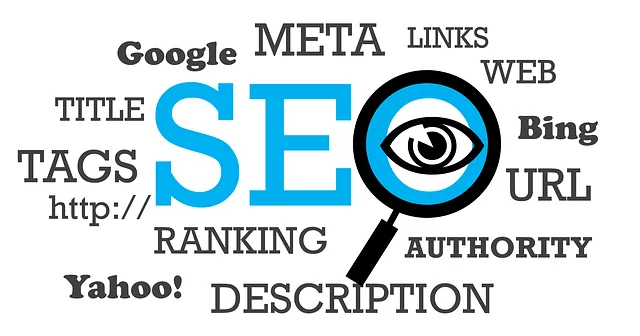The Robots.txt file is a crucial tool for Technical SEO Training, acting as a guide for search engine crawlers like Googlebot and Bingbot, helping them navigate and index websites efficiently. By understanding and configuring it correctly, website owners can control accessibility, ensuring important pages are discovered accurately while protecting sensitive content. Effective robots.txt strategies are key to optimizing site structures, boosting online presence, and enhancing crawl efficiency, all vital components of Technical SEO Training. Regular reviews and updates are essential to adapt to evolving SEO trends and changing website structures. Mastering Robots.txt is indispensable for anyone in Technical SEO Training, enabling them to manage search engine access, safeguard privacy, and improve mobile and voice search rankings by prioritizing user experience.
“Unleash your website’s full potential with an in-depth exploration of Robots.txt, a powerful tool in Technical SEO. This comprehensive guide serves as your roadmap to optimizing web accessibility and search engine visibility. From understanding the fundamentals to crafting strategic files, we’ll navigate how search engines interact with Robots.txt, enabling you to control crawler access effectively. Learn to balance crawl allowance and disallowance, exclude sensitive content, and optimize for mobile and voice search. Avoid common mistakes and master advanced techniques, ensuring your website shines in the digital landscape, ready for any Technical SEO training challenge.”
Understanding Robots.txt: A Technical SEO Foundation

Robots.txt is a fundamental component in Technical SEO, serving as a communication channel between search engines and website owners. It’s a simple text file placed in the root directory of your website, providing instructions on which pages or files should be crawled and indexed by bots. Understanding this file is crucial for anyone undergoing Technical SEO Training, as it directly impacts how search engines perceive and interact with your site.
This file uses a set of rules to direct web crawlers, like Googlebot, Bingbot, etc., on what content to access and index. It allows website owners to control the accessibility of specific pages or directories, ensuring efficient crawling and indexing. By learning how to configure and interpret Robots.txt, you gain an essential skill in maintaining a healthy and optimized site structure for search engines, contributing significantly to your Technical SEO efforts.
How Search Engines Interact with Robots.txt Files

Search engines, like Google, Bing, and Yahoo, play a pivotal role in connecting users to relevant websites on the internet. When it comes to understanding website structure and content, these search giants rely heavily on robots.txt files. This file acts as a roadmap for web crawlers, specifying which pages or sections of a site should be indexed (made searchable) and which should remain hidden. By providing this guidance, website owners can control how much information is made available to search engines, thereby influencing their site’s visibility in search results.
In the realm of Technical SEO Training, understanding robots.txt files is essential. It allows webmasters to optimize their sites for search engine crawlers, ensuring that important pages are discovered and indexed accurately. Proper use of this file can enhance a website’s accessibility, improve crawl efficiency, and ultimately boost its online presence, making it a crucial aspect of any SEO strategy.
Creating an Effective Robots.txt Strategy

Creating an effective robots.txt strategy is a crucial aspect of any comprehensive Technical SEO training. It involves carefully crafting rules to guide search engine crawlers, ensuring they access and index only the desired pages on your website. A well-structured robots.txt file helps maintain site performance by blocking access to duplicate or low-quality content, preventing unnecessary data processing for both the search engine and your servers.
When developing this strategy, consider the specific needs of your website and target audience. Identify sensitive areas like administrative dashboards or pages with dynamic content that should be protected from public crawling. Regularly review and update your robots.txt file to adapt to changes in site structure or new SEO trends. This proactive approach ensures your website remains optimized for both search engines and users, enhancing overall Technical SEO performance.
Specifying Crawl Allowance and Disallowance

In the realm of Technical SEO, robots.txt files play a pivotal role in guiding search engine crawlers, ensuring they respect your website’s accessibility preferences. This file acts as a map, specifying exactly what parts of your site should be crawled and indexed. When configuring robots.txt, it’s crucial to balance open access with controlled exposure. By utilizing the `Allow` and `Disallow` directives, webmasters can direct crawlers to specific paths or entire sections of the site.
For instance, in a Technical SEO Training context, developers might employ `Allow` to grant access to important pages like `/blog` while `Disallow` could be used to restrict crawlability for temporary or sensitive areas such as `/admin`. This strategic approach not only improves indexing efficiency but also safeguards against overloading search engines with irrelevant data.
Excluding Sensitive or Unwanted Content

Robots.txt plays a critical role in Technical SEO Training, allowing website owners to control how search engines crawl and index their sites. By excluding sensitive or unwanted content through this file, webmasters can ensure that confidential data remains secure. This is particularly important for pages containing personal information, legal documents, administrative settings, or any other content that should not be made publicly accessible.
When properly configured, the Robots.txt file directs search engine bots to ignore specific sections of a website, preventing them from indexing sensitive material. This not only enhances privacy but also safeguards against potential security risks associated with exposing confidential information online. Effective use of Robots.txt is an essential skill for anyone in Technical SEO Training, as it contributes to creating a secure and well-organized web presence.
Optimizing for Mobile and Voice Search with Robots.txt

In today’s digital era, optimizing for mobile and voice search has become crucial for any website aiming to excel in Technical SEO Training. Robots.txt plays a significant role in this process by providing clear instructions to web crawlers, ensuring they access and index the most relevant content. As more users rely on smartphones and voice assistants for information, it’s essential to ensure your site is mobile-friendly and optimized for voice search queries.
By using Robots.txt strategically, you can control which pages and content are accessible to search engines. This includes tailoring the file to accommodate different user behaviors, such as allowing access to dynamic or interactive content while blocking sensitive or duplicate data. This approach not only enhances crawl efficiency but also improves overall user experience, a key factor in both mobile and voice search rankings.
Common Robots.txt Mistakes to Avoid

Many websites make the mistake of believing that a simple `Robots.txt` file is enough to optimize their site for search engines. While it’s a crucial tool in Technical SEO Training, it’s not a magic solution. Common errors include blocking important pages or sections inadvertently, especially dynamic content areas and user-generated content like blogs or forums. This can hinder search engine crawlers from indexing vital information, reducing the site’s visibility and potential ranking.
Another oversight is neglecting to update `Robots.txt` regularly as a website evolves. New pages, changes in site structure, or updates to content strategies mean that what was once appropriate might not be anymore. Regularly reviewing and optimizing this file ensures search engines can access the right content, leading to better indexing and potentially higher rankings, which are all part of an effective Technical SEO Training program.
Monitoring and Troubleshooting Your Robots.txt File

Monitoring and troubleshooting your robots.txt file is an essential part of any comprehensive Technical SEO training. This file acts as a map, guiding search engine crawlers on which pages to access and index. Regularly checking its content and functionality ensures that your site’s accessibility remains optimal. By utilizing tools provided by search engines, you can easily verify if the file is being parsed correctly and if there are any errors or warnings.
Troubleshooting might involve resolving issues like blocked critical pages, incorrect disallow directives, or unexpected redirections. Understanding these problems and their solutions is crucial for maintaining a healthy site architecture and enhancing your website’s visibility on search engine results pages (SERPs). Effective monitoring also allows you to adapt quickly to changes in your website’s structure, ensuring that your robots.txt file continues to serve its purpose in facilitating efficient crawling and indexing by search engines.
Advanced Techniques for Technical SEO Training

In today’s digital landscape, Technical SEO Training is more critical than ever for website owners and developers to stay ahead of the curve. Advanced techniques go beyond basic optimization by delving into complex algorithms and web crawling dynamics. These include understanding robots.txt files, which provide crucial instructions to search engines on how to crawl and index a site’s content, ensuring efficient data harvesting.
Effective Technical SEO Training equips professionals with tools to navigate labyrinthine code structures, identify and rectify technical issues like broken links or crawl errors, and optimize site architecture for better search engine visibility. By mastering these skills, folks can enhance their website’s performance, boost organic traffic, and deliver a superior user experience – all vital components for online success in the competitive digital arena.



